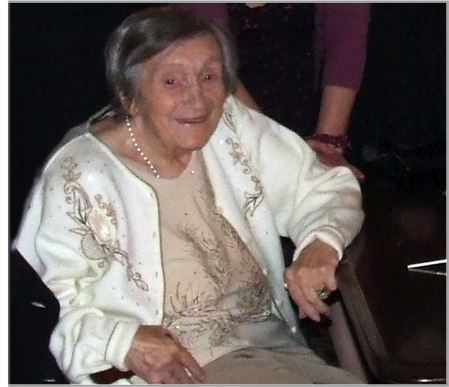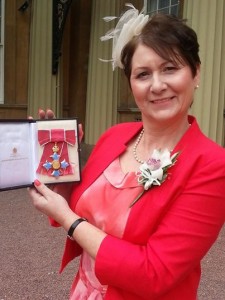Cure the NHS was formed in the winter of 2007 following the death of Bella Bailey who died on the 08/11/2007, following an 8 week stay at Mid Staffs Foundation Trust (Stafford Hospital) for an inflamed hiatus hernia.
After the first few days the family realised that it was an unsafe hospital and subsequent reports have revealed there were no safety systems in place in some areas of the hospital. The family were so concerned about Bella’s care and the way other patients were being treated they refused to leave her side.

Julie Bailey and her family stayed with Bella for her entire stay and what they saw during those eight weeks left them determined to do something about the appalling care that they witnessed, “What we saw horrified us”, said Julie Bailey in 2007 on her first interview after leaving the hospital.
Following her mother’s death, Julie contacted the CEO Martin Yeates, telling him the hospital was a dangerous place but received no response. She also spoke to the Director of Nursing, Helen Moss, and the local Labour MP David Kidney. Both dismissed her concerns.
Not giving up she made contact with the Overview and Scrutiny Committee made up of Stafford borough councillors, she received a solicitor’s letter back, warning her not to contact them again.
Julie realised others must have seen the sufferings she had during her eight weeks on the ward, she wrote a letter of appeal to the local newspaper.
Within days the letters began to flood in. There were so many similar, almost identical, experiences. So many other families’ loved ones had been neglected or abused at Mid Staffs.
Following the Health Care Commission Report into the hospital Julie said, “My mum was one of the lucky ones as she had her family around her when she died, and we too were lucky as we had each other. We shared the care between us and were able to discuss the horrors we witnessed.
Many of the letters we received were from relatives who only had themselves to provide the care, too fearful to leave their loved ones. They had to watch as their relative failed and faded before them. Many had been full time carers now forced to watch as their loved one’s body broke down. Dressings left unchanged and sores left to fester, nurses too busy to attend to even the most basic of nursing needs. Many wrote how they watched their loved ones shrinking before them from lack of nourishment and care. Unable to provide the care they once did, now reliant on the nursing staff for their loved one’s needs”.
The victims families formed the campaign group Cure the NHS in December 2007. Following the meeting the founder of Cure the NHS, Julie Bailey made a statement to the press,
“We have launched this campaign and we have found each other. Through very sad circumstances we now intend to ensure something is done. We are ordinary people who have witnessed the abuse and neglect of vulnerable people. We have put our trust in others who have let us down. We have all seen our loved ones suffer and we all know unless we do something together more will suffer”.
The Health Care Commission already had concerns about the hospital regarding specific mortality alerts and launched an investigation following an unannounced inspection. The HCC report was published in March 2009, nearly a year later and confirmed all of Cure the NHS’s concerns. The hospital had harmed many patients and those who should have helped patients hadn’t.
Cure the NHS began a campaign for a public inquiry under the Inquiries Act 2005.They wanted to know why with so many regulators within the NHS, the hospital had been allowed to harm so many for so long. Furthermore, if this hospital had harmed and failed so many were there other hospitals doing the same?
Cure the NHS had become a magnet for people all over the country who had been failed by their hospital. What was starting to become apparent was that there were problems at other hospitals and the NHS complaints process was failing many. Instead of learning from complaints and listening to complainants many organisations would, deny and delay dealing with complainants. Cure the NHS still hears from complainants from all over the country and advises them on the NHS complaints process.
A complainant’s first contact is often with PALS who are part of the NHS. Their advice is often to speak with the ward manager, or matron of the ward you are complaining about. This is fine for something minor but not for a serious failing. Concerned families are often encouraged by the PALS team to discuss problems and not to officially complain, even when there have been serious failings.
Cure the NHS continued their campaign for a public inquiry and were supported by other patient groups, such as the AVMA and the Patients Association, who called on the Labour Government to give the relatives a statutory inquiry under the Inquiries Act 2005.
Relatives were offered an independent case note review but maintained that it was far from independent. The hospital managed the start of the proceedings and the case notes were often incomplete with many containing notes of other patients.
In 2009 the Government set up a series of reviews into the hospital. Cure the NHS continued their campaign for the public inquiry as they wanted the wider NHS examined and not the hospital. Cure the NHS believed the HCC had already examined the hospital it was now the regulators that needed looking into. They wanted to know why the hospital had been allowed to fail so many patients and for so long. And was it failing other hospitals?
Cure the NHS continued their campaign by engaging a legal team and began a legal challenge against the Government decision not to award the families a statutory inquiry. In response the Government announced a non-statutory, Independent inquiry and appointed Robert Francis QC, to Chair it.
Cure the NHS gave evidence to the Independent Inquiry but continued their campaign for the statutory inquiry that would compel witnesses to give evidence in public. They wanted more than anything to hear from the regulators such as the GMC, NMC and the PHSO among many others from the wider NHS. They felt that examining the hospital again was not necessary and branded it the “secret inquiry” as nobody knew who had given evidence and who had said what. They were disappointed when the Mid Staffs Independent Inquiry was reported on, as it very much targeted the frontline staff, not the leaders within the organisation.
The ’Secret Inquiry’ only made Cure the NHS more determined. For two years they followed health Ministers and MP’s all over the country, determined that the NHS needed examining. The only way they felt that could be done was with a full Public Inquiry under the Inquiries Act 2005.
Upon his election as Prime Minister David Cameron announced the public inquiry that Cure the NHS had campaigned so hard for, again chaired by Robert Francis. The report was published in 2013 and concluded that “the NHS failure had extended to every level of the NHS, from the trust board to the regulators, the health authority and the Department of Health”.
The report made 290 recommendations, not another root and branch reorganisation, but a change in culture.
Cure the NHS sat through every day of the public inquiry with some members giving evidence and as core participants they were able to give their own recommendations. These can be seen in their Blueprint for a safer NHS.
Since the inquiry Cure the NHS has continued to campaign for safe care for all and for the recommendations to be implemented. The Bristol Heart Inquiry (a similar inquiry but ten years earlier) had been awarded under the same circumstances. The recommendations had never been implemented and many believe if they had been, the Mid Staffs disaster would never have happened.
Cure the NHS now work with many organisations within the NHS, to ensure that lessons are really learnt and the culture does change. They share their experience and understanding of what has gone wrong in the NHS. Although they work with the NHS their independence is critical to them and they always stay outside of the system.
Their founder, Julie Bailey, was awarded a CBE in the New Year’s Honours list 2014 for her services to older people and voted into 2nd place in the Woman’s Hour Power List 2014, as one of the top game changers operating in the UK today.
Julie speaks to a wide range of audiences and has been working with leaders from England, Scotland and Wales.
Her book “From Ward to Whitehall- the disaster at Mid Staffs” captures the struggle she had to be heard to help to expose systemic failings within the NHS.
Now Cure the NHS offers support and advice to people throughout the country who have been harmed within the NHS.

